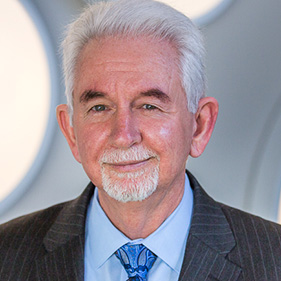Report finds state’s mental health programs need consistent funding, community engagement
Mental illness is a major public health issue. According to the Centers for Disease Control and Prevention, more than 20% of U.S. adults live with a mental illness, like depression and anxiety. For perspective, this is more than all adults with coronary heart disease (5%) and diabetes (14.7%) combined. Yet, understanding and addressing mental illness remains very challenging.
A team of UC Davis experts were tasked with evaluating the services of 15 mental health crisis programs in California. These programs designed for adult and transitional age youth (ages 16-25) were funded between 2018 and 2021 by state mental health legislation called SB-82.
The goal of the evaluation was to draw lessons learned from investing in these programs that could help inform crisis intervention development in California.
The team interviewed program providers, users of mental health services and law enforcement officers. They also reviewed grant proposals, census data and agreements with community partner, and conducted two surveys with grant recipients. They presented their report to the Mental Health Services Oversight and Accountability Commission.
Their evaluation highlighted ways to promote better mental health crisis management in California and the need for consistent funding and community engagement.
Diversity of mental health services and infrastructure
Over $33 million was distributed to 15 recipients to fund programs for adult and transitional age youth. The report showed that 14 of the 15 programs provided a total of 81,643 services from the start of funding through December 21, 2021. These services were offered during 23,485 encounters with 17,408 individual clients. The services fit into four main categories:
- prevention
- crisis access and lifeline
- mobile crisis assessment and triage
- post-crisis follow-up
Some of the benefits of delivering these services included less psychiatric hospitalizations and involuntary holds, referrals to psychiatric hospitals from the emergency department, and law enforcement involvement in crisis care.
The programs operated in very diverse counties in terms of infrastructure and geography. For example, the population size ranged from 45,670 in Calaveras County to 10.2 million in Los Angeles County. This diversity led to a variety of services provided.
“What works in one county may not be suitable for another. Flexibility and understanding that a small rural county may have very different needs than a large urban county is a really important starting place for allocating funds,” said co-lead author Joy Melnikow, a professor emeritus of family and community medicine.
The researchers found that giving programs flexibility in how they used the funds was critical. Much of the money was used on triage, mobile crisis assessment and following up with individuals after a crisis.

They also found that it was important for programs to offer extended hours.
“A lot of the crisis events we see are late nights and weekends and when these crisis services aren't here, that falls on emergency departments and law enforcement officers afterwards, neither of which is necessarily better to deal with that,” said co-lead author Mark Savill, assistant professor in the Department of Psychiatry and Behavioral Sciences.
The report highlighted the role of community partnerships and the need for crisis services and law enforcement coordination.
“Every law enforcement officer we interviewed was incredibly supportive and recognized the real key impact of having mental health professionals in this crisis space. A lot of these officers’ time went into engaging in crisis care interactions. They don't have the adequate training and resources to deal with such situations. Having an allyship with these programs was critical to better serving the public they're engaging with,” Savill said.
The need for long-term support and a continuum of care
The report also showed that the funding enabled counties to develop new and useful strategies and collaborations. Some of these efforts allowed for much-needed longer term follow up.
“When we spoke to providers, family members and key partners, we were really hearing how it's critical to think about supporting that transition towards longer term recovery, so they don't have another crisis,” Savill said.
According to the report, looking into where the money was spent could point to the gaps in the system.
“By following the money, we identified where the gaps in the system tend to be at this point,” said Cameron Carter, co-lead author on the report and chair of the Department of Psychiatry and Human Behavior at the University of California, Irvine. “The need is really in preventing future crises, getting people out of that crisis cycle by having them linked to ongoing care. Clients shared how some services were transformative in their lives, such as having that support afterward and some continuity of someone to speak to.”
The need is really in preventing future crises, getting people out of that crisis cycle by having them linked to ongoing care.”—Cameron Carter, UC Irvine
He noted that there is a revolving door phenomenon where clients cycle through the system and eventually lose trust in finding help.
“A lot of the services that were delivered related to follow up. I think the reason for that was a gap in the system. You have to link people with follow up care and help support them so that the things that precipitated the initial crisis don't just keep repeating themselves,” Melnikow commented.

The need for a sustainable funding strategy to support mental health programs
A major issue for program planning was the inconsistent funding.
“As you identify things that work, how do we shift from a cyclic funding strategy?” Melnikow asked. “There should be a way to make successful programs more sustainable. It is hard to plan and build on success when the grant ends, and you have to find another source of funding. This is really important because that insecurity just doesn't allow counties to build systems that can be durable.”
Ideally, she said, there would be a coordinated policy that would be sustained over time.
There should be a way to make successful programs more sustainable. It is hard to plan and build on success when the grant ends, and you have to find another source of funding.” —Joy Melnikow, UC Davis
Demanding job that needs support, recognition and promotion
Melnikow also raised the issue of appreciation and compensation for those working in the mental health field.
“It is important to recognize that this kind of crisis care is really demanding and hard on the people who deliver it. It's hard to find people who want to do it. They may not feel supported in what they're trying to do with the clients, making it difficult to recruit and retain staff.”
Mentoring and a career path for mental health crisis team members are also important.
“They're being asked to work under difficult conditions, after hours, in a mobile way. They need supervision and support. That's essential in all areas of mental health care, but the biggest is for those who are out in the field. They need a career path,” Carter explained. “They need to have a place in the system where they can do what they're doing but also develop and move on to more responsible, better compensated roles within the system.”

Other recommendations
The success of mental health crisis programs also depends on community organizations working together.
“It is critical to meet the people where they are. Working on mental health crises needs to be community based. You need to foster very strong links with your community. That includes the Sheriff's Department, law enforcement, housing, other mental health services, and charities. These community connections are critical to getting referrals in, providing effective care, and supporting longer-term recovery-oriented services later,” Savill explained.
It is critical to meet the people where they are. Working on mental health crises needs to be community based. You need to foster very strong links with your community.”—Mark Savill, UC Davis
About the Investment in Mental Health Wellness Act of 2013
• meet the needs of individuals in crisis in the least restrictive manner
• reduce the costs of avoidable emergency department use
• reduce law enforcement involvement
• reduce inpatient hospitalizations
The funds provided by the legislation were intended to improve access to and delivery of crisis triage services across California. These services focused on increasing capacity along the spectrum of care for mental crises. This included crisis prevention, intervention, stabilization, mobile crisis support and connection with post-crisis mental health services.
Read the full final report and recommendations: California State Evaluation and Learning Support for SB-82 Triage Grants. (pdf)
UC Davis coauthors of this report are Bethney Bonilla-Herrera and Katrine Padilla of the Center for Healthcare Policy and Research and Jamie Mouzoon of the Behavioral Health Center of Excellence. Other coauthors are Lindsay Banks and Matthew L. Goldman.
Helpful links:
- Soluna App for free mental health support to 13- to 25-year-olds in California
- Aggie Mental Health




